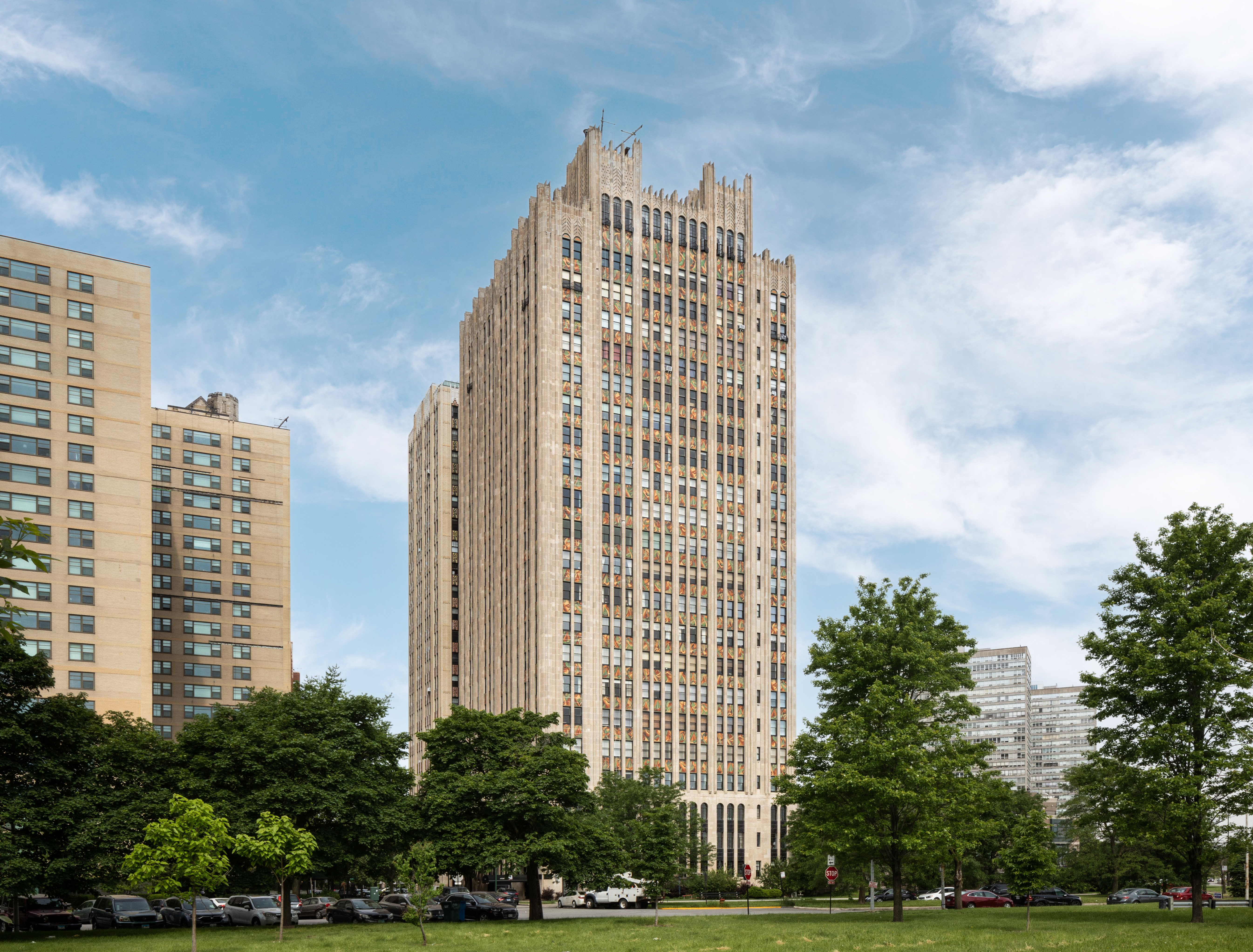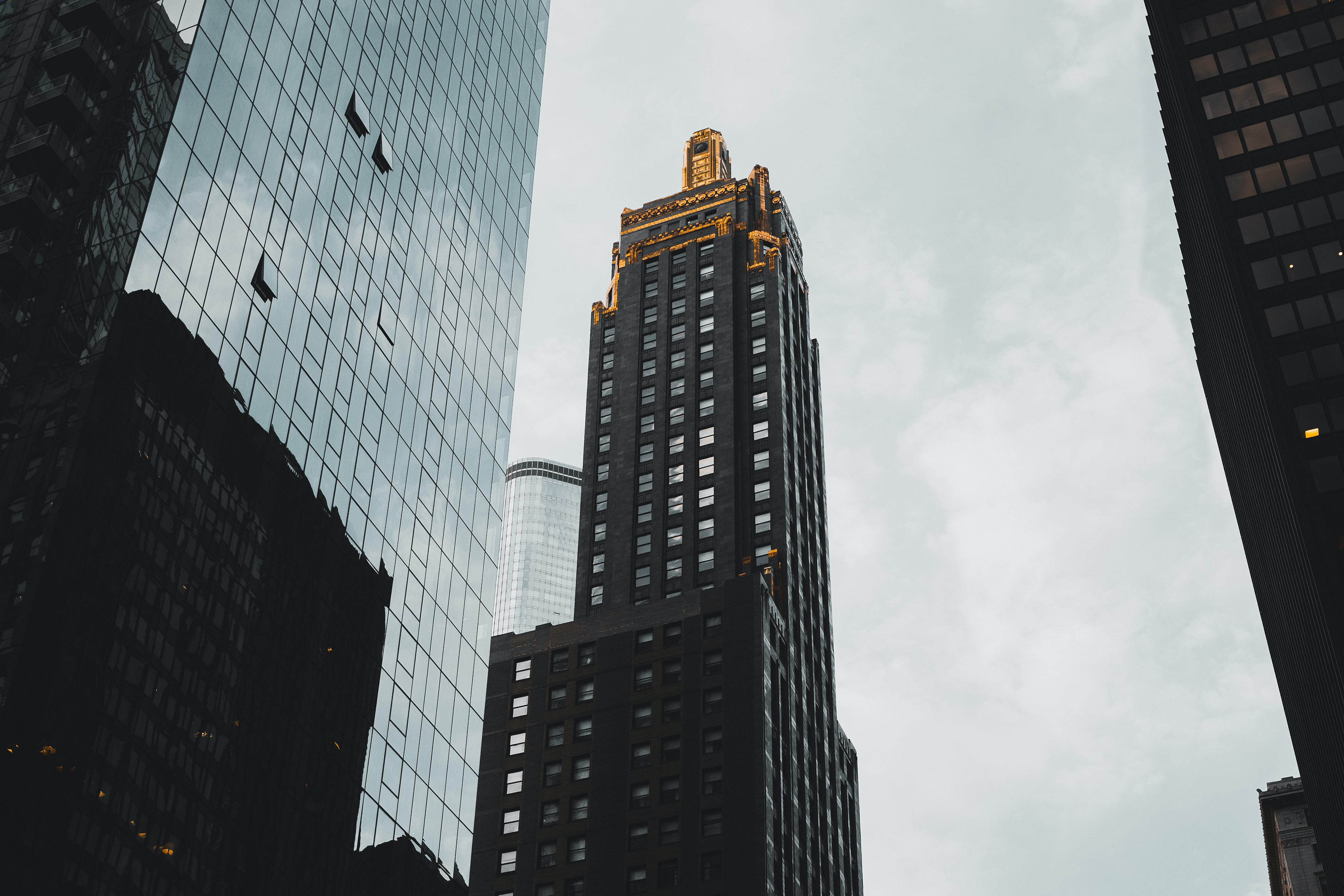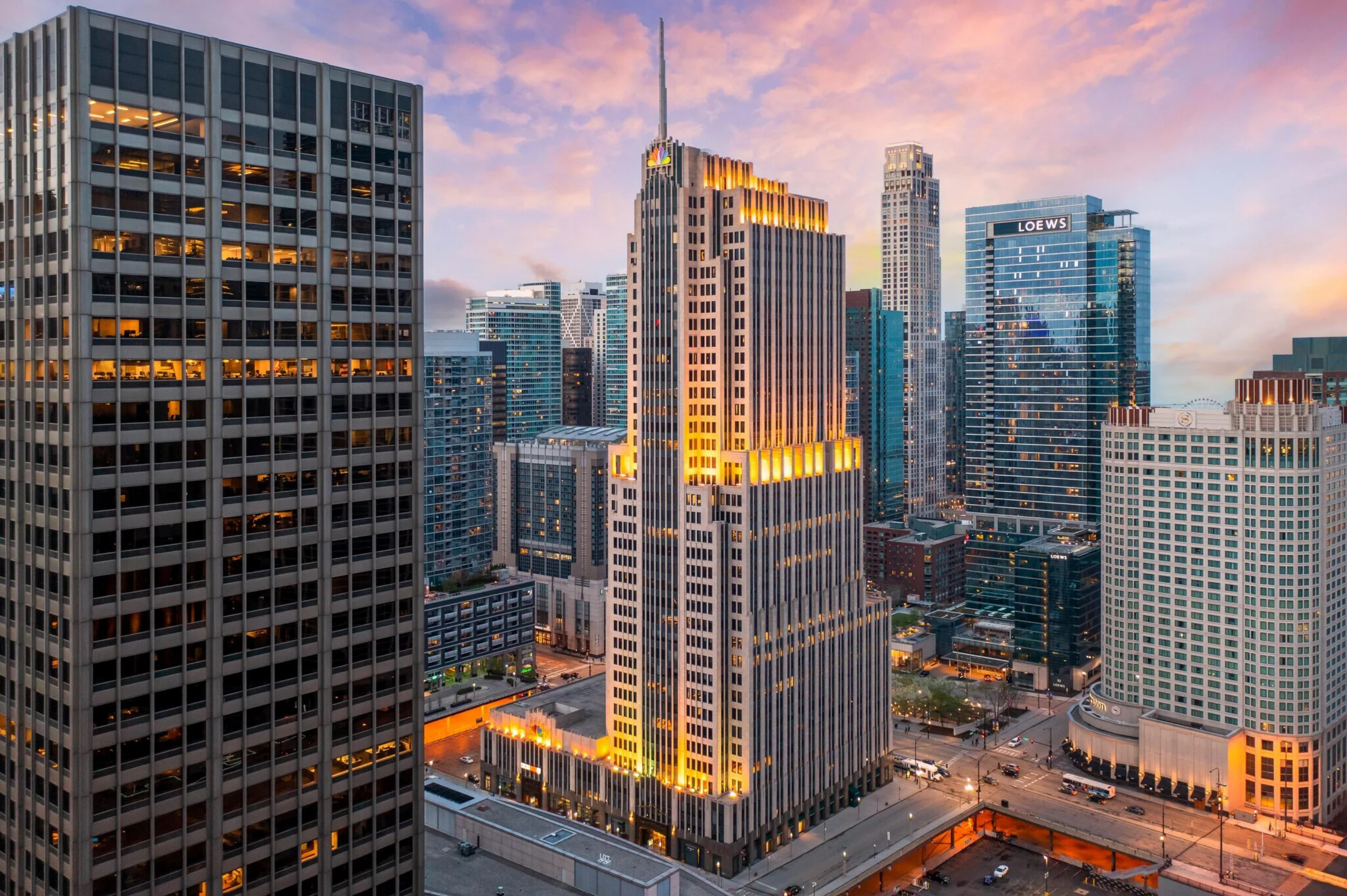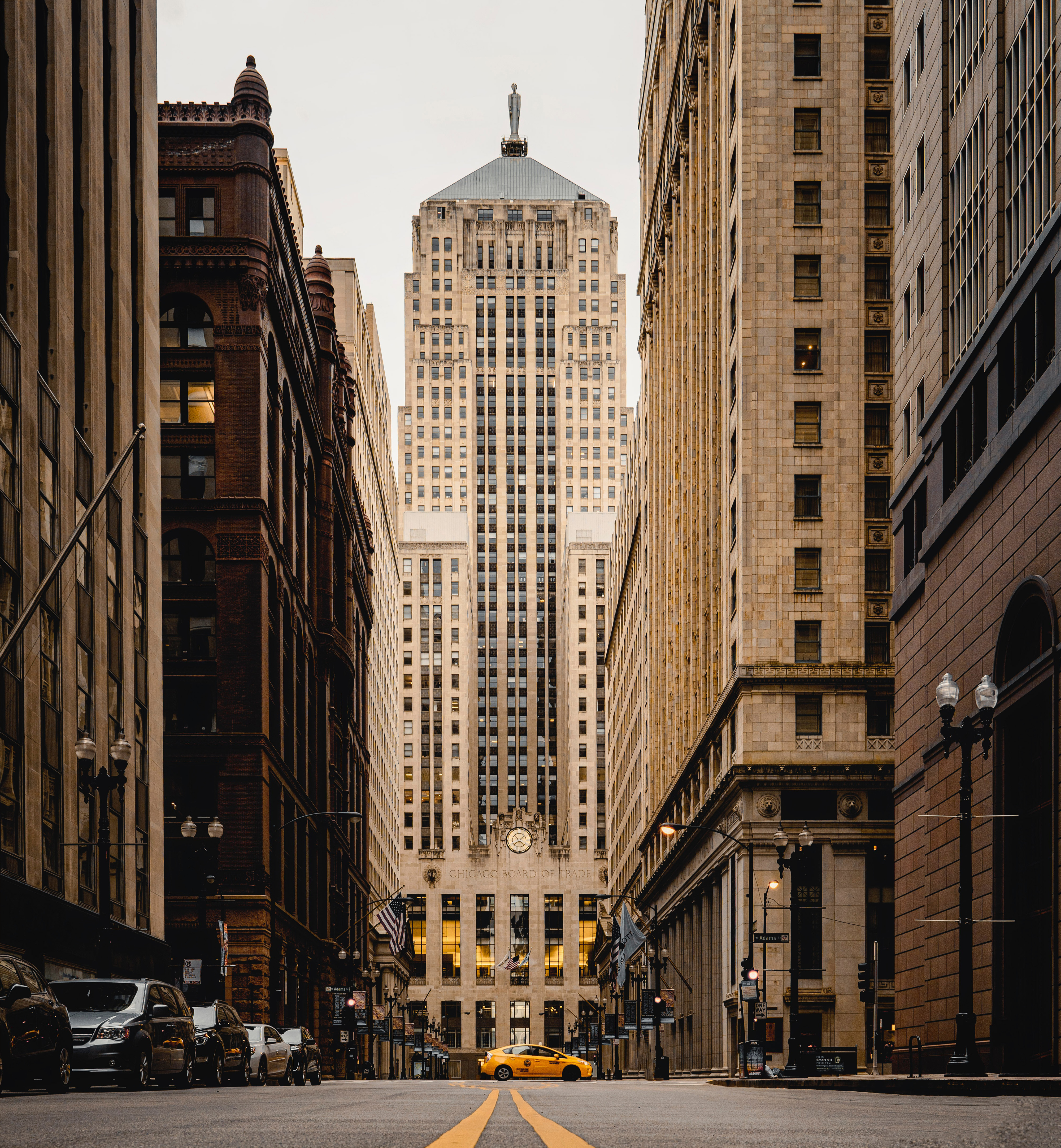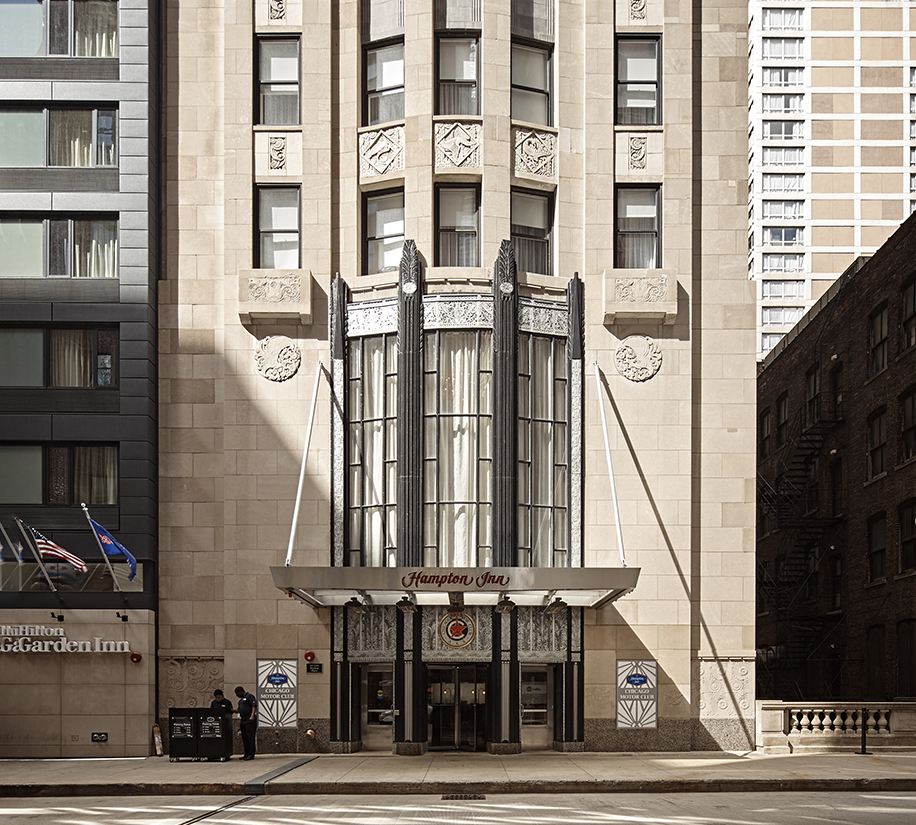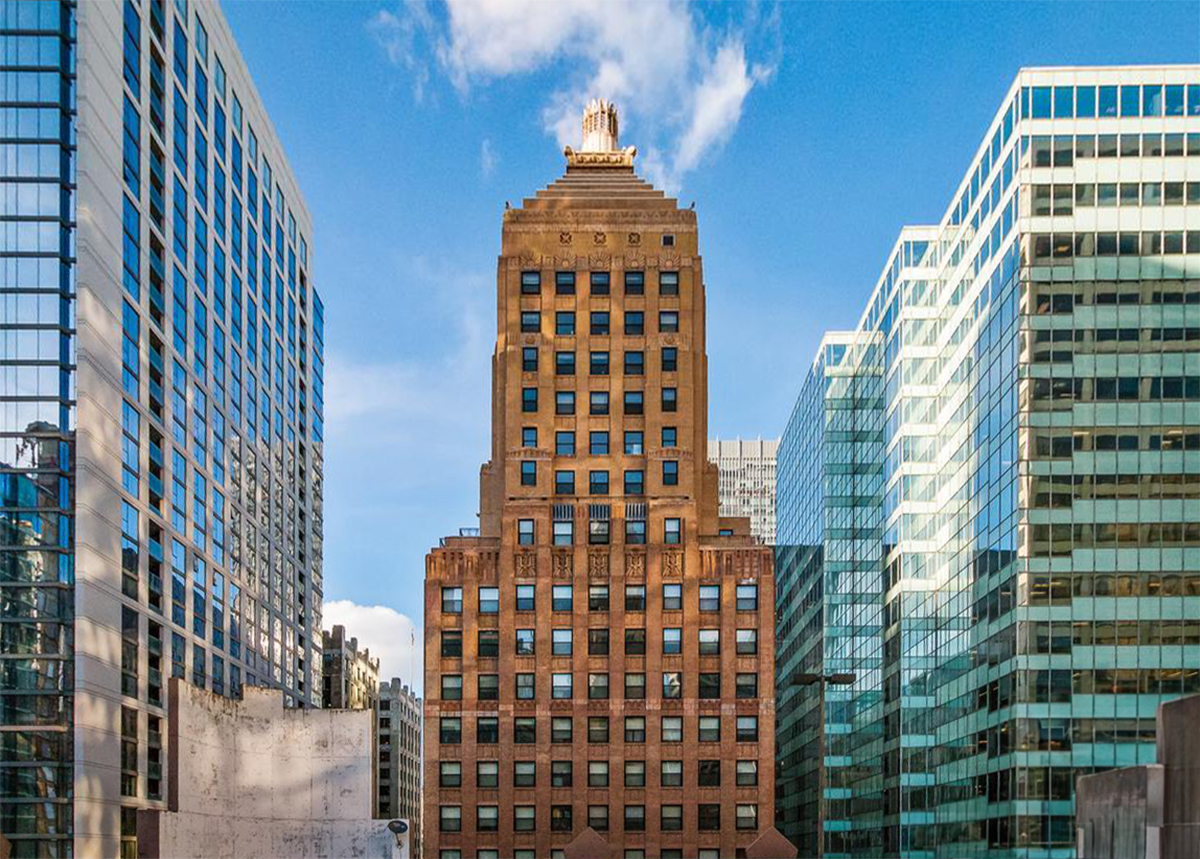The Powhatan Apartments is an Art-deco skyscraper designed in 1927 by Charles L. Morgan & Robert De Golyer, and built between 1928 and 1929 in Chicago, IL.
Its precise street address is 4950 South Chicago Beach Drive, Chicago, IL. You can also find it on the map here.
The Powhatan Apartments is a structure of significant importance both for the city of Chicago and the United States as a nation. The building embodies the distinctive characteristic features of the time in which it was built and the Art Deco style. Because of that, the Powhatan Apartments was officially declared as a national landmark on January 12th 1993.
The building has been restored 3 times over the years to ensure its conservation and adaptation to the pass of time. The main restoration works happened in 1950, 2005 and 2017.
